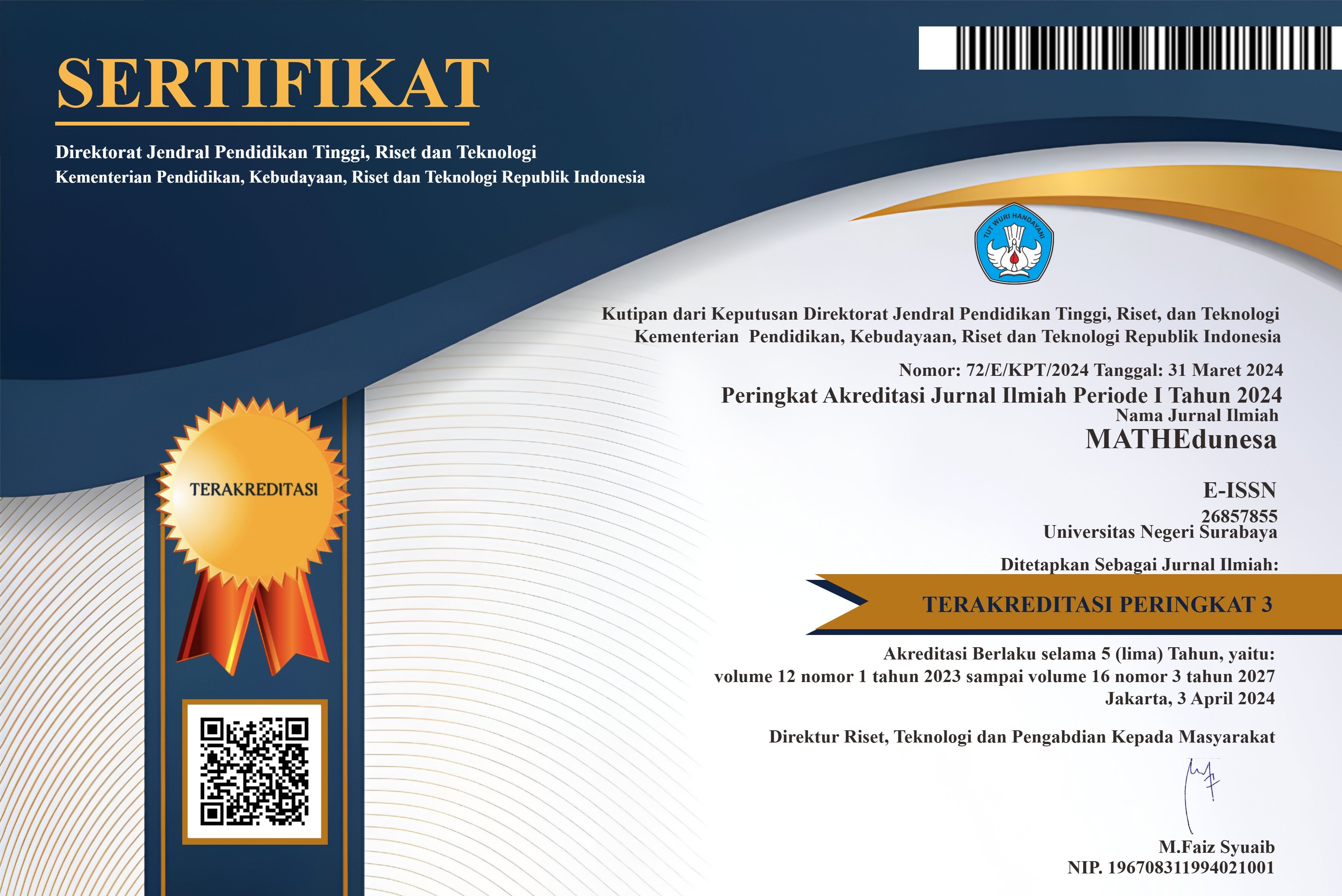Proses Berpikir Kreatif Siswa dalam Menyelesaikan Masalah Matematika Tipe Ill-Structured Ditinjau dari Kemampuan Matematika
Abstract
This qualitative descriptive research aims to describe the creative thinking process of junior high school students in solving ill-structured type mathematics problems on Two-Variable Linear Equation System (TVLES) topics in terms of mathematical abilities. The instruments used are the Mathematics Ability Test (MAT), Problem Solving Task (PST), and interview guidelines. The subjects in this study consisted of 3 middle school students in class VIII even semester with high, medium, and low mathematics abilities who had learned TVLES material. Creative thinking process data were obtained through MAT, which were analyzed based on the stages of creative thinking according to Siswono (2008). The interview results were analyzed by condensing data, presenting data, and drawing conclusions. The results of this research show that the creative thinking processes of students with different mathematical abilities have different characteristics. Ill-structured problems can encourage students to think creatively by generating more than one solution idea. At the stage of synthesizing ideas, students with high mathematical abilities relate the information on the problem to TVLES learning experiences and daily experiences, and students with moderate mathematical abilities relate the information to learning experiences of arithmetic operations and daily experiences. In contrast, students with low mathematical abilities only relate the information with experience learning arithmetic operations. At the idea building stage, students with high and moderate mathematical abilities can come up with 2 ideas, students with low mathematical abilities only come up with 1 idea. At the planning stage of implementing ideas, students with high mathematical abilities are productive in choosing ideas to be used, while students with low mathematical abilities are not productive in choosing ideas to be used. At the stage of applying ideas, students with high, medium and low abilities solve problems well and correctly and come up with new ideas because they have never had an ill-structured problem before but the ideas they have are different. The results of this research highlight the importance of considering students' creative thinking processes in developing learning materials.
Downloads
Downloads
Published
Issue
Section
 Abstract views: 83
,
Abstract views: 83
, PDF Downloads: 75
PDF Downloads: 75




